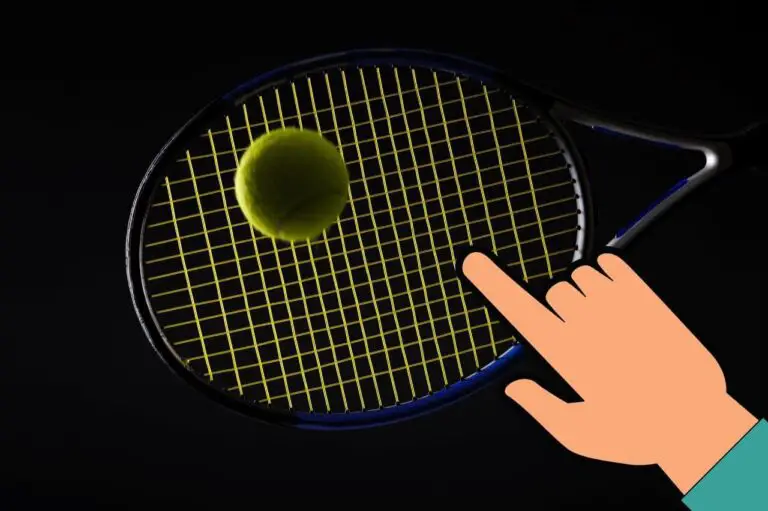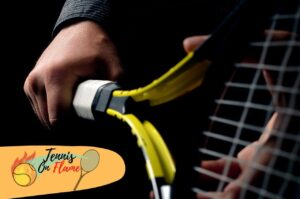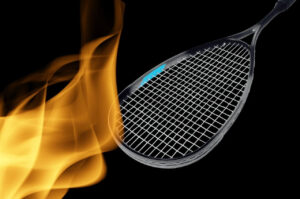There are a lot of things to consider when you are looking for a new tennis racket – buy how do I know which one is right for me?
The right one for you will depend on your playing style, experience level, and budget.
In this guide, I will walk you through the different factors you need to consider when choosing a tennis racket.
So, whether you are a beginner or an experienced player, read on to learn more about choosing the right tennis racket!
How do you know which tennis racket is right for you?
Headsize, weight, and string pattern are the three components that influence power and control when selecting a racket.
-The size of the racket’s head is measured in square inches.
A larger head provides a larger sweet spot, which is the area on the strings that contact the ball for maximum power.
However, a smaller head size provides more control.
-The weight of the racket is measured in ounces (oz).
Heavier rackets provide more control, while lighter rackets provide more power.
-The string pattern is the number of main and cross strings on the racket’s head.
Denser Stringbed provides more control while an open stringbed provides more power.
Now that you know the three components that affect power and control, you can start to narrow down your options.
Consider your playing style, experience level, and budget to find the perfect racket for you!

Is it better to have a light or heavy tennis racket?
A general rule of thumb is that a racket with a greater weight is more powerful, more stable, and delivers less impact than one with a lighter weight.
A player can swing a racket that is lighter more quickly because it is more maneuverable.
So, it’s up to you to decide what is more important to you: power or speed. If you want a racket that is going to give you an edge in your game, choose one with a heavier weight.
If you are just starting, or if you want a more forgiving racket, go for a lighter weight. You can always add weight to the frame later if you want more power.
How do you pick a beginner’s racquet?
I recommend that beginners should start with the lighter racket.
It will be simpler to swing the racket, and you will be able to play for longer before becoming fatigued.
Heavier rackets can be more difficult to move at first since your tennis-playing muscles aren’t yet developed.
As your muscles get stronger, you can move up to a heavier racket if you want more control.
But for now, focus on swinging lightly and easily.
How do you choose an intermediate tennis racket?
If you’re an intermediate player, you should look for a racket that provides integration of two elements: power and control, while you keep working on your swing.
A racket with larger head size (98 and up to around 104 square inches) will offer a larger sweet spot, making it easier to hit the ball with power.
A slightly heavier racket (11 to 11.5 ounces) will offer more control.
How do you choose an advanced tennis racquet?
If you are an advanced player, One of the most essential aspects to consider when selecting a new tennis racket is the weight.
the lighter racket will be more nimble, but a heavier racket will provide greater stability, control, and power on your shots.
What is the best tennis racket size for adults?
The best tennis racket size for adults is around 27 inches or 68.58 centimeters.
This offers a good balance of power and control, and it is also the standard size for most adult players.
If you are taller than average or have large hands, you may want to consider a larger racket (27.5 inches or 69.85 centimeters).
Conversely, if you are shorter than average or have small hands, you may want to consider a smaller racket (25 inches or 63.5 centimeters).
Ultimately, the best way to find the right racket size for you is to try out different sizes and see what feels comfortable in your hands.
What size is a junior tennis racket?
The size of a junior tennis racket varies depending on the child’s age.
A child aged between two to four years old should use a 19-inch frame.
A junior between four to six years old should use a 21-inch frame.
Kids between six to eight years old should use a 23-inch racquet.
kids between eight to ten years old should use a 25-inch frame.
Kids between nine to eleven years old should use a 26-inch racquet.
Can a 12-year-old use an adult tennis racket?
Yes, a 12-year-old can use an adult tennis racket. Most 12-year-olds are ready to play with a complete-sized racket (27 inches or 68.58 centimeters), especially if they’ve previously played the sport.
The best way to find the right racket size for your child is to have them try out different sizes and see what feels comfortable in their hands.
Ultimately, the size that they feel most comfortable with is going to be the best size for them.
What tennis racket grip size should you buy?
There is no definitive answer to this question because it depends on the size of your hand.
However, a good rule of thumb is that You’ll want a handle that is large enough for your fingers to have some space between them and your palm.
If your fingertips reach around the handle and re-enter your palm, you’ll want a bigger grip.
What happens if the tennis grip is too small?
A grip that is too small forces you to use more muscular power to prevent the racquet from twisting in your hand.
Tennis elbow issues can be exacerbated by long-term usage of a grip that is too tiny.
In conclusion:
There is no definitive answer to the question of what size tennis racket you should buy.
It depends on your playing style, level of experience, and hand size.
However, some general guidelines can help you narrow down your choices.
If you are a beginner, look for a lighter racket with larger head size.
If you are an experienced player, look for a racket that is slightly heavier and offers more control.
Ultimately, the best way to find the right racket for you is to try out different sizes and see what feels comfortable in your hands.
I hope this article was helpful! 🙂
Stay tuned for more posts about interesting topics in the world of tennis sport!
Do you have any questions or comments about How do I know which tennis racket is right for me? Let me know in the comments below!
I hope you will check out my other blog posts for more informative guides.
Thanks for being with me in this comprehensive guide and until the next time, keep playing and have fun! 🙂








